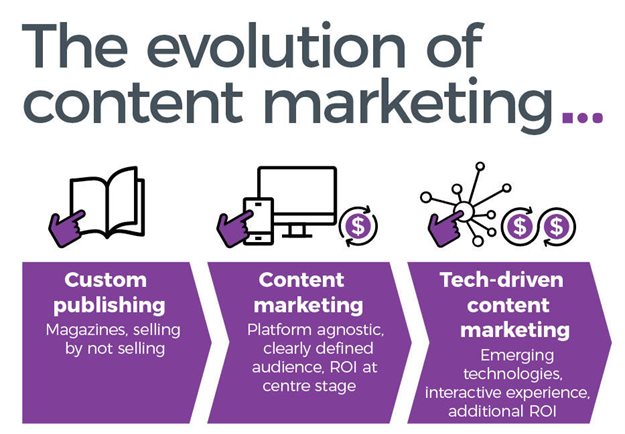By Pia Silva.
When you hear the term “content marketing,” it’s easy to think of big brands with six-figure advertising budgets and a team of bloggers and infographic designers on their sides. The thing is, it doesn’t matter how “big” your brand is. Even if you’re a freelancer or solopreneur, content marketing can make a significant difference for your ability to attract high-quality clients.
Yes, creating quality content marketing requires a fair amount of time — but what doesn’t? This is an important investment into your brand that will keep on giving.
It’s Essential For (Long-Term) Lead Generation
People no longer make a knee-jerk purchase because of an ad they happened to see on TV or online. Instead, they consider various options and do their research before making a decision.
When done right, your content will help you distance your brand from the competition. It will engage potential clients and provide the information they need to make their decision. It will present you in the best light possible.
Creating content is always worth it! The biggest reason? Because unlike ad campaigns, content is forever. It continues to exist on your website and other channels long after you publish it.
High-value content could eventually rank in Google search results itself, serving as a lasting form of lead generation. Valuable, insightful content has the potential to keep delivering value for your brand long after you’ve written it and forgotten about it.
If Google Cares About Content, You Should, Too
There’s no two ways around it: Google always attempts to put the best, most relevant content in front of people. These results are based on what they type into a Google search bar, as well as the quality of the content itself. The more “white hat” SEO-driven content you can produce, the easier it will be for potential clients to discover your brand.
Remember, there are no tricks or shortcuts anymore. Anyone trying to sell you the SEO equivalent of a “get rich quick” scheme shouldn’t be trusted. The way to get good SEO is by creating good content — not by tossing in a bazillion keywords or stuffing your content with backlinks.
This was especially clear during a recent email conversation with Maria Khramtsova, CEO of FortuneZ, a markets and iGaming media publication. She explained, “While keywords are important, your first priority should always be to provide real value to your target audience.”
Continued Khramtsova, “Always ask yourself if your content is truly informing them and helping them gain new insights about the topic. You can worry about working in keywords afterwards. When you write for the audience first, you’ll be able to work in keywords naturally, without detracting from the value of the content as a whole.”
Content Is Key For Better Understanding Your Customers
Wouldn’t it be nice to pry back the lid and get an inside look inside your prospects’ brains to know what they’re thinking — and what they want? Content marketing lets you do just that, through a trial-and-error approach — though one that doesn’t have the high costs of a traditional ad campaign attached.
Because they are housed on your website, the value of each content marketing piece can be easily quantified based on things like number of views, leads and so on.
With this in mind, you can then use your content to test audience-specific ideas like tone, target needs, branding messages and product or service ideas. The more content you create, the more you can learn about what your target audience likes or doesn’t like.
Over time, this allows you to fine-tune your voice and subject matter until you’ve got your content marketing running like a well-oiled machine. And with more quality, relevant content to help prospects discover you, it’ll be that much easier to connect.
Content Marketing Demonstrates Credibility (Instead Of Just Talking About It)
Far too many “experts” simply share a list of their services and an about page that acts like a virtual mini-resume. They assume that this is all they need to do to demonstrate their expertise and gain the trust of potential clients.
Yes, these website features can be helpful starting points, but your content marketing is how you can really prove your credibility — and not just say that you are.
Sure, you can talk about your industry experience and say that you did some big-time stuff at your old job before diving into your new career as a solopreneur, but the average prospect is going to need a lot more than that before they can trust you. Even testimonials from current and former clients can sometimes fall short, because a prospect may feel like they have different needs or concerns than your satisfied customers.
Your content marketing offers a chance for you to share your real opinions and insights about your industry. This isn’t where you have to try to be diplomatic. Strong opinions on relevant industry topics is how your potential clients can truly come to know you and your approach. Most importantly, it’s how they learn what makes you different or special.
Start Your Content Marketing Journey Now
Whether you’re planning to produce your own content or partner with a trusted freelancer, the most important thing is to start content marketing now. When you provide worthwhile, valuable content, you give potential clients a compelling reason to do business with you.
Feature Image Credit: STEVE WASTERVAL
By Pia Silva
Follow me on Twitter or LinkedIn. Check out my website or some of my other work here.
I am a partner and brand strategist at Worstofall Design where we build brands that turn expertise into profit. Unlike most branding firms, we build entire brands in days instead of months, and only work for 1-3 person service businesses. Our unique process and niche positioning has helped us to overcome the hurdles we struggled with when we were starting our business, reliably attracting a steady flow of high paying clients and allowing us to enjoy the freedom that inspired us to become entrepreneurs in the first place. At Forbes, my goal is to clarify and simplify the elusive idea of “branding,” and share practical tips and tangible steps to help businesses find their unique brand voice that leads to profit













